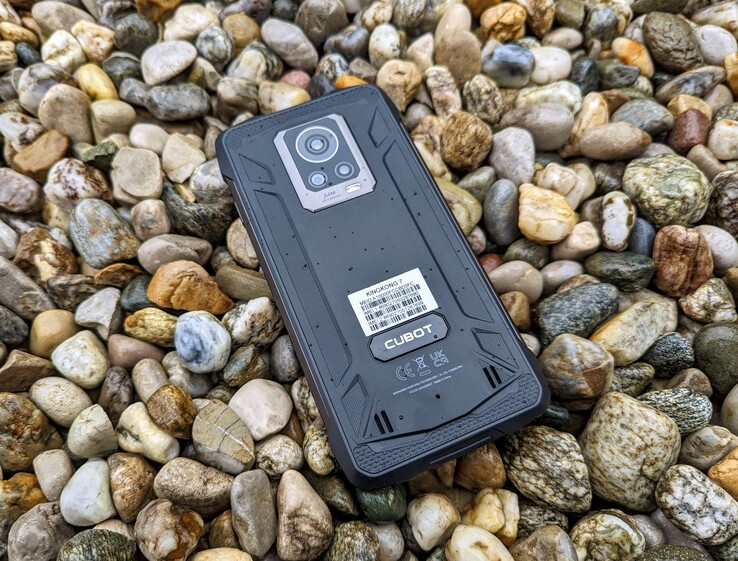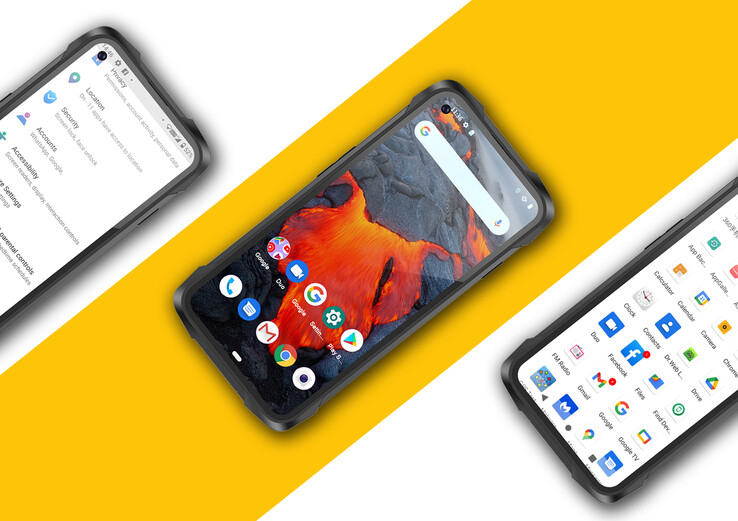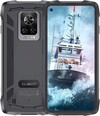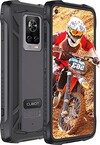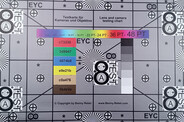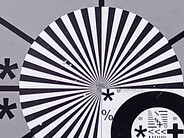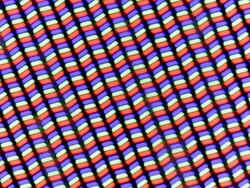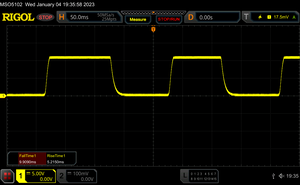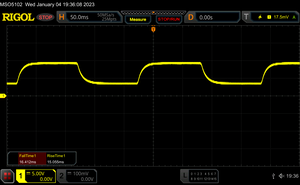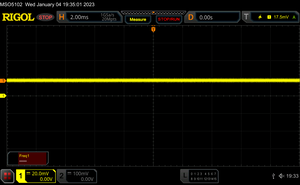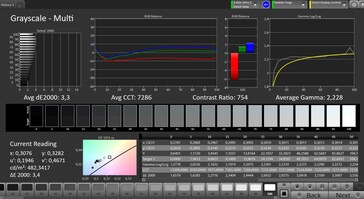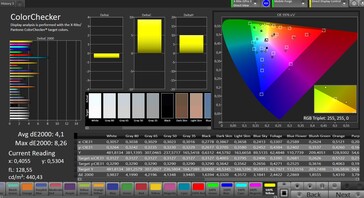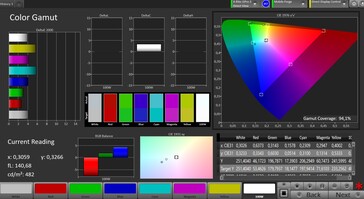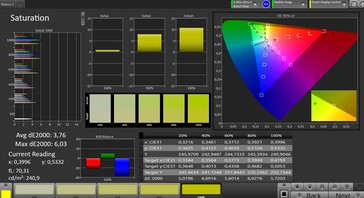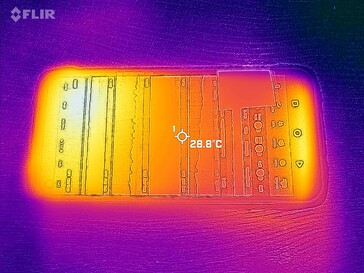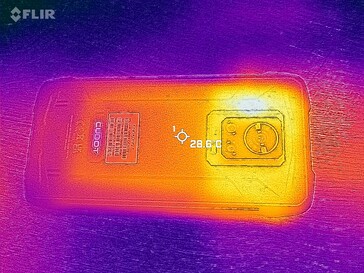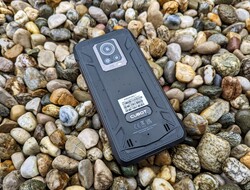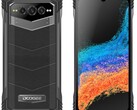Cubot KingKong 7 review - Cheap Rugged Smartphone with IP Certification
Possible competitors in comparison
rating | date | model | weight | drive | size | resolution | price from |
|---|---|---|---|---|---|---|---|
| 75 % | 01/2023 | Cubot KingKong 7 Helio P60, Mali-G72 MP3 | 267 g | 128 GB eMMC Flash | 6.36" | 2300x1080 | |
| 74.5 % | 10/2022 | Ulefone Armor 15 Helio G35, PowerVR GE8320 | 346 g | 128 GB UFS 2.0 Flash | 5.45" | 1440x720 | |
| 81.9 % | 08/2022 | Samsung Galaxy XCover 6 Pro SD 778G 5G, Adreno 642L | 235 g | 128 GB UFS 2.2 Flash | 6.60" | 2408x1080 | |
| 78 % | 10/2021 | Motorola Defy SD 662, Adreno 610 | 232 g | 64 GB eMMC Flash | 6.50" | 1600x720 |
Case and features - Doesn't feel so good in the hand
You can tell that the Cubot KingKong 7 is an outdoor phone at first glance: a roughened case in industrial design with partially visible screws speaks for itself. The phone is very well protected against water and dust, which is guaranteed by an IP69K and MIL-STD certification. A protruding edge protects the display in case of a drop.
Unfortunately, the casing is also a bit angular and does not feel that comfortable in the hand without a protective cover. The Cubot cell phone weighs a bit more than a Samsung Galaxy XCover 6 Pro but there are also much heavier outdoor phones.
If you want to use the SD card reader, you have to sacrifice a SIM slot for it, otherwise you can also use two SIM cards at the same time. The SD reader achieves good read and write rates with our reference microSD Angelbird V60.
Cubot sells two storage variants of the phone, both with 8 GB of RAM: the model with 128 GB of mass storage costs about 220 Euros and about 235 Euros with 256 GB.
| SD Card Reader - average JPG Copy Test (av. of 3 runs) | |
| Cubot KingKong 7 (Angelbird V60) | |
| Average of class Smartphone (10.9 - 77, n=96, last 2 years) | |
| Samsung Galaxy XCover 6 Pro (Angelbird V60) | |
| Motorola Defy (Angelbird V60) | |
| Ulefone Armor 15 (Angelbird AV Pro V60) | |
Cross Platform Disk Test (CPDT)
Communication, software and operation - Stable WLAN
The Cubot KingKong 7 is equipped with WiFi 5. In our test with the Asus ROG Rapture AXE11000 router, it achieves decent data rates, but they are sometimes well below 300 Mbps, especially in the reception direction.
The outdoor phone does not have 5G, but it does have a decent number of 4G frequencies, so you can also use the Cubot KingKong 7 for mobile Internet on a trip abroad.
The Cubot phone still comes with Android 11, so you should not hope too much for further updates. The security patches are from July 2022 and thus already outdated at the time of testing. At least Cubot installs pure Android without third-party advertising apps.
A separate fingerprint sensor is found on the casing's right, which is logically positioned but can hardly be felt haptically. It unlocks the phone reliably after a short wait. The Cubot KingKong 7 can also be unlocked via facial recognition. This works reliably in good ambient light but is not quite as secure.
| Networking | |
| iperf3 transmit AX12 | |
| Motorola Defy | |
| iperf3 receive AX12 | |
| Motorola Defy | |
| iperf3 transmit AXE11000 | |
| Ulefone Armor 15 | |
| Cubot KingKong 7 | |
| iperf3 receive AXE11000 | |
| Ulefone Armor 15 | |
| Cubot KingKong 7 | |
| iperf3 transmit AXE11000 6GHz | |
| Samsung Galaxy XCover 6 Pro | |
| iperf3 receive AXE11000 6GHz | |
| Samsung Galaxy XCover 6 Pro | |
Cameras - For outdoor snapshots
A 64-megapixel sensor, Samsung's Isocell GW1, is used in the main camera, and the smartphone also offers a 16-megapixel wide-angle camera and a macro lens. Thus, the KingKong 7 is quite well positioned in terms of flexibility, but you can only switch directly between the sensors, so hybrid zoom is not possible.
Snapshots with the main camera are a bit dark outdoors and look low in detail when you look closer. Furthermore, the contrast could be higher. The image reproduction is very cold in very low light, and the sharpness also decreases considerably. You should not expect a high light yield from the wide-angle camera either. However, both cameras are sufficient for snapshots that are only to be viewed on the smartphone screen anyway.
Videos are possible in 1080p and 30 fps at most. Here, you have to cope with an often pumping autofocus.
The front-facing camera with a lush 32 megapixels takes decent selfies, but the brightness and details could be better here as well.
Image Comparison
Choose a scene and navigate within the first image. One click changes the position on touchscreens. One click on the zoomed-in image opens the original in a new window. The first image shows the scaled photograph of the test device.
Main cameraMain cameraLow LightWide-angle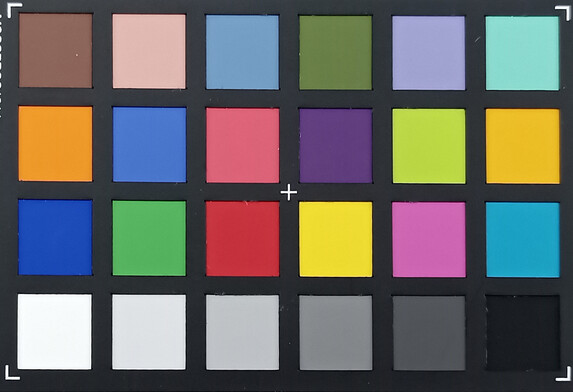
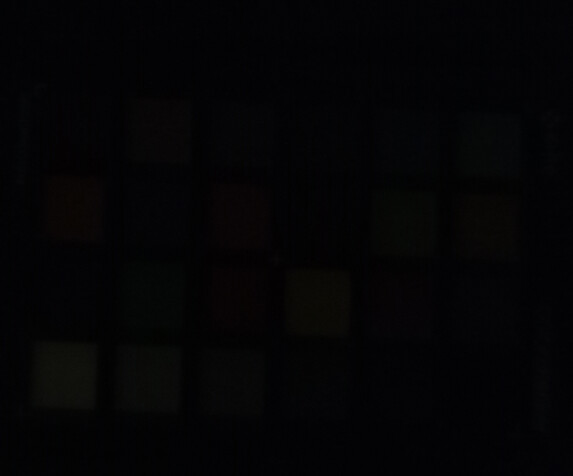
Display - Reasonably bright screen
Outdoor phones should actually have particularly bright screens to remain legible even in bright environments. However, this is rarely possible due to the low budget, and Cubot's KingKong 7 is still comparatively well positioned with its average brightness of 466 cd/m². That is sufficient for cloudy days outdoors, but it gets difficult in direct sunlight.
The black value is also quite high, so the display is rather dull due to low contrasts. Colors are at least rendered fairly true to the original, except for blue-green tones.
It is nice that Cubot has opted for a Full HD panel; other brands often only offer a 720p display. In addition, the screen does not need PWM.
| |||||||||||||||||||||||||
Brightness Distribution: 91 %
Center on Battery: 462 cd/m²
Contrast: 757:1 (Black: 0.61 cd/m²)
ΔE Color 4.1 | 0.5-29.43 Ø5
ΔE Greyscale 3.3 | 0.57-98 Ø5.3
94.1% sRGB (Calman 2D)
Gamma: 2.228
| Cubot KingKong 7 IPS, 2300x1080, 6.36 | Ulefone Armor 15 IPS, 1440x720, 5.45 | Samsung Galaxy XCover 6 Pro PLS, 2408x1080, 6.60 | Motorola Defy IPS, 1600x720, 6.50 | |
|---|---|---|---|---|
| Response Times | -16% | 4% | -101% | |
| Response Time Grey 50% / Grey 80% * | 31.4 ? | 35.41 ? -13% | 31 ? 1% | 59 ? -88% |
| Response Time Black / White * | 15 ? | 17.89 ? -19% | 14 ? 7% | 32 ? -113% |
| PWM Frequency | 5221 | |||
| Screen | -35% | -34% | -14% | |
| Brightness middle | 462 | 416 -10% | 510 10% | 402 -13% |
| Brightness | 466 | 407 -13% | 495 6% | 386 -17% |
| Brightness Distribution | 91 | 96 5% | 92 1% | 90 -1% |
| Black Level * | 0.61 | 0.37 39% | 0.46 25% | 0.45 26% |
| Contrast | 757 | 1124 48% | 1109 46% | 893 18% |
| Colorchecker dE 2000 * | 4.1 | 7.3 -78% | 7.41 -81% | 4.83 -18% |
| Colorchecker dE 2000 max. * | 8.26 | 15 -82% | 13.26 -61% | 9.53 -15% |
| Greyscale dE 2000 * | 3.3 | 9.6 -191% | 10.6 -221% | 6.4 -94% |
| Gamma | 2.228 99% | 1.95 113% | 2.518 87% | 2.378 93% |
| CCT | 7286 89% | 8536 76% | 10050 65% | 8348 78% |
| Total Average (Program / Settings) | -26% /
-31% | -15% /
-27% | -58% /
-32% |
* ... smaller is better
Display Response Times
| ↔ Response Time Black to White | ||
|---|---|---|
| 15 ms ... rise ↗ and fall ↘ combined | ↗ 10 ms rise | |
| ↘ 5 ms fall | ||
| The screen shows good response rates in our tests, but may be too slow for competitive gamers. In comparison, all tested devices range from 0.1 (minimum) to 240 (maximum) ms. » 31 % of all devices are better. This means that the measured response time is better than the average of all tested devices (21.5 ms). | ||
| ↔ Response Time 50% Grey to 80% Grey | ||
| 31.4 ms ... rise ↗ and fall ↘ combined | ↗ 16.4 ms rise | |
| ↘ 15 ms fall | ||
| The screen shows slow response rates in our tests and will be unsatisfactory for gamers. In comparison, all tested devices range from 0.2 (minimum) to 636 (maximum) ms. » 36 % of all devices are better. This means that the measured response time is similar to the average of all tested devices (33.8 ms). | ||
Screen Flickering / PWM (Pulse-Width Modulation)
| Screen flickering / PWM not detected | |||
In comparison: 53 % of all tested devices do not use PWM to dim the display. If PWM was detected, an average of 17933 (minimum: 5 - maximum: 3846000) Hz was measured. | |||
Performance, emissions and battery life - Enduring outdoor phone
The Cubot KingKong 7 is not a performance miracle with its MediaTek Helio P60 but it is on par with other inexpensive outdoor phones. If you do not demand too much from the processor, the system runs reasonably fast with only occasional stutters. However, you have to reckon with delays as soon as you start more complex apps and cannot expect an absolutely smooth display.
Cubot also only installs slow eMMC flash, so loading processes take quite a long time.
The maximum temperature of 35.9 °C is very reasonable and is also very limited locally. There are no performance losses during longer loads.
The speaker is hardly enjoyable; it sounds very treble-heavy and the music is hardly enjoyable with it. Bluetooth 4.2 is an outdated protocol for connecting wireless headphones, and you can only use the USB-C port for connecting via cable.
Cubot at least gets a runtime of up to 15:26 hours out of the 5000 mAh battery in our Wi-Fi test. That is not record-breaking, but decent and should get you through the day even with more demanding tasks.
| PCMark for Android - Work 3.0 | |
| Samsung Galaxy XCover 6 Pro | |
| Average of class Smartphone (4761 - 21385, n=211, last 2 years) | |
| Cubot KingKong 7 | |
| Average Mediatek Helio P60 () | |
| Motorola Defy | |
| Ulefone Armor 15 | |
| GFXBench | |
| on screen Aztec Ruins Normal Tier Onscreen | |
| Average of class Smartphone (3.6 - 123, n=223, last 2 years) | |
| Samsung Galaxy XCover 6 Pro | |
| Motorola Defy | |
| Ulefone Armor 15 | |
| Cubot KingKong 7 | |
| Average Mediatek Helio P60 (6.6 - 8.6, n=7) | |
| 1920x1080 Aztec Ruins Normal Tier Offscreen | |
| Average of class Smartphone (2.3 - 229, n=223, last 2 years) | |
| Samsung Galaxy XCover 6 Pro | |
| Motorola Defy | |
| Cubot KingKong 7 | |
| Average Mediatek Helio P60 (6.2 - 8.3, n=7) | |
| Ulefone Armor 15 | |
| on screen Aztec Ruins High Tier Onscreen | |
| Average of class Smartphone (2.8 - 105, n=223, last 2 years) | |
| Samsung Galaxy XCover 6 Pro | |
| Motorola Defy | |
| Ulefone Armor 15 | |
| Cubot KingKong 7 | |
| Average Mediatek Helio P60 (2.6 - 6.4, n=7) | |
| 2560x1440 Aztec Ruins High Tier Offscreen | |
| Average of class Smartphone (0.85 - 94, n=223, last 2 years) | |
| Samsung Galaxy XCover 6 Pro | |
| Average Mediatek Helio P60 (2.1 - 4.3, n=7) | |
| Motorola Defy | |
| Cubot KingKong 7 | |
| Ulefone Armor 15 | |
| Cubot KingKong 7 | Ulefone Armor 15 | Samsung Galaxy XCover 6 Pro | Motorola Defy | Average 128 GB eMMC Flash | Average of class Smartphone | |
|---|---|---|---|---|---|---|
| AndroBench 3-5 | -29% | 250% | 57% | 15% | 446% | |
| Sequential Read 256KB | 480.8 | 285.68 -41% | 841.6 75% | 306.5 -36% | 283 ? -41% | 1505 ? 213% |
| Sequential Write 256KB | 212.9 | 161.1 -24% | 484.7 128% | 187.7 -12% | 193 ? -9% | 1112 ? 422% |
| Random Read 4KB | 81 | 64.99 -20% | 170.6 111% | 96.4 19% | 82.4 ? 2% | 247 ? 205% |
| Random Write 4KB | 26 | 18.36 -29% | 204.2 685% | 92.6 256% | 54 ? 108% | 271 ? 942% |
Temperature
(+) The maximum temperature on the upper side is 35.9 °C / 97 F, compared to the average of 35 °C / 95 F, ranging from 21.9 to 56 °C for the class Smartphone.
(+) The bottom heats up to a maximum of 34.3 °C / 94 F, compared to the average of 33.8 °C / 93 F
(+) In idle usage, the average temperature for the upper side is 21.9 °C / 71 F, compared to the device average of 32.7 °C / 91 F.
| 3DMark - Wild Life Stress Test Stability | |
| Cubot KingKong 7 | |
Speaker
Cubot KingKong 7 audio analysis
(+) | speakers can play relatively loud (83.8 dB)
Bass 100 - 315 Hz
(-) | nearly no bass - on average 26.3% lower than median
(±) | linearity of bass is average (14.1% delta to prev. frequency)
Mids 400 - 2000 Hz
(±) | higher mids - on average 5% higher than median
(±) | linearity of mids is average (8.9% delta to prev. frequency)
Highs 2 - 16 kHz
(±) | higher highs - on average 11.6% higher than median
(±) | linearity of highs is average (11.2% delta to prev. frequency)
Overall 100 - 16.000 Hz
(-) | overall sound is not linear (31% difference to median)
Compared to same class
» 76% of all tested devices in this class were better, 4% similar, 20% worse
» The best had a delta of 12%, average was 38%, worst was 134%
Compared to all devices tested
» 88% of all tested devices were better, 3% similar, 10% worse
» The best had a delta of 4%, average was 25%, worst was 134%
Motorola Defy audio analysis
(+) | speakers can play relatively loud (83.9 dB)
Bass 100 - 315 Hz
(-) | nearly no bass - on average 30% lower than median
(-) | bass is not linear (15.6% delta to prev. frequency)
Mids 400 - 2000 Hz
(+) | balanced mids - only 3.5% away from median
(+) | mids are linear (6% delta to prev. frequency)
Highs 2 - 16 kHz
(+) | balanced highs - only 3.8% away from median
(+) | highs are linear (4.5% delta to prev. frequency)
Overall 100 - 16.000 Hz
(±) | linearity of overall sound is average (21% difference to median)
Compared to same class
» 32% of all tested devices in this class were better, 8% similar, 60% worse
» The best had a delta of 12%, average was 38%, worst was 134%
Compared to all devices tested
» 52% of all tested devices were better, 8% similar, 40% worse
» The best had a delta of 4%, average was 25%, worst was 134%
Battery life
| Battery Runtime - WiFi Websurfing | |
| Ulefone Armor 15 | |
| Motorola Defy | |
| Cubot KingKong 7 | |
| Average of class Smartphone (424 - 2844, n=224, last 2 years) | |
| Samsung Galaxy XCover 6 Pro | |
Pros
Cons
Verdict - Protected cell phone for basic activities
If you want your smartphone to be well protected in everyday use, you will get a water- and dust-proof chassis in the Cubot KingKong 7, which is hardly affected by bumps thanks to its thick edges. However, the rubber coating is relatively slippery and some of the edges are quite sharp, so the phone does not feel as secure and comfortable in the hand without an additional cover.
The screen has a high resolution and is bright enough for hazy days. The performance is sufficient for smooth system operation as long as you only perform basic tasks like making calls, writing messages, or running simple apps. 5G is not available, but there are quite a few 4G frequencies and a quite stable Wi-Fi signal. The phone's battery life is also convincing.
The camera is more suitable for snapshots, so you should not expect too much here. You also have to live with the short warranty of only 1 year.
The Cubot KingKong 7 is a robust phone that fulfills basic requirements. However, it could be a bit more secure and comfortable in the hand.
If you want a more spectacular look, you can look at the Ulefone Armor 15 which even comes with TWS headphones tucked away in the case. If it can be more expensive, then the Samsung Galaxy XCover 6 Pro even promises WiFi 6 and considerably more performance.
Price and availability
The smartphone is available for quite a low price from the manufacturer itself: The 128 GB version is available for just under 190 Euros, and the 256 GB model costs 10 Euros more. However, taxes and shipping are added, which vary depending on the country.
If you prefer to order from amazon.de the cost will be just under 250 Euros for the outdoor phone with 128 GB. With 256 GB, just under 280 Euros are due at amazon.de.
Cubot KingKong 7
-
01/04/2023 v7
Florian Schmitt


 Deutsch
Deutsch English
English Español
Español Français
Français Italiano
Italiano Nederlands
Nederlands Polski
Polski Português
Português Русский
Русский Türkçe
Türkçe Svenska
Svenska Chinese
Chinese Magyar
Magyar